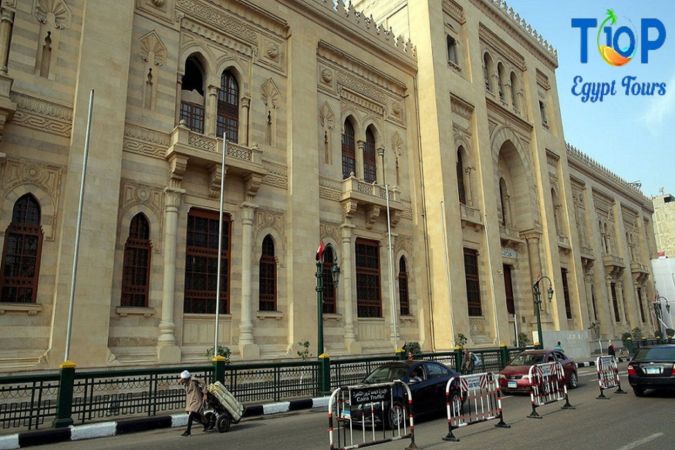The Museum of Islamic Art, located in Cairo, Egypt, is a treasure trove of Islamic art and culture. This article explores the captivating features, historical context, and cultural significance of the Museum of Islamic Art, highlighting its rich collections, architectural beauty, and contribution to preserving and promoting Islamic heritage.
In this article, we will uncover for you the Museum of Islamic Art with Top Ten Egypt.
The Museum of Islamic Art: A Gateway to Islamic Culture
The Museum of Islamic Art stands as a gateway to the rich cultural heritage of the Islamic world. This section delves into the layout and architectural features of the museum, highlighting its elegant design, spacious galleries, and serene ambiance. We will discuss the atmosphere that greets visitors and the immersive experience of exploring the museum’s collections.
Historical Context: Preserving Islamic Heritage
The Museum of Islamic Art has a rich historical background, reflecting Egypt’s commitment to preserving and showcasing Islamic art. This section provides historical context, exploring the establishment of the museum and its evolution over time. We will discuss its role in safeguarding and promoting Islamic heritage, both locally and internationally.
Collection Highlights: A Diverse Array of Islamic Art
The Museum of Islamic Art houses a vast and diverse collection of Islamic art spanning centuries and regions. This section highlights some of the notable pieces in the museum’s collection, including exquisite calligraphy, illuminated manuscripts, ceramics, textiles, metalwork, and architectural elements. We will explore the significance and artistic mastery of these artifacts.
Cultural Significance: Celebrating Islamic Art and Culture
The Museum of Islamic Art plays a significant role in celebrating and promoting Islamic art and culture. This section examines its cultural significance, discussing how it showcases the artistic achievements of various Islamic dynasties and regions. We will also explore how the museum fosters cross-cultural dialogue and appreciation for the diversity within Islamic art.
Educational Initiatives: Nurturing Understanding and Appreciation
It is dedicated to educational initiatives that foster understanding and appreciation of Islamic art and culture. This section highlights the museum’s educational programs, including guided tours, workshops, lectures, and outreach activities. We will discuss how these initiatives contribute to the preservation and transmission of knowledge.
Conservation and Restoration: Safeguarding Artistic Treasures
Preserving the artistic treasures within the Museum of Islamic Art is a priority. This section explores the museum’s efforts in conservation and restoration, discussing the challenges faced in preserving delicate artworks and architectural elements. We will highlight the meticulous processes involved in maintaining the integrity of the collection.
Visitor Experience: Immersion in Islamic Artistry
Visiting the Museum offers a unique and enriching experience for art enthusiasts and cultural explorers. This section provides practical information for visitors, including details about visiting hours, ticketing, and recommended itineraries. It also highlights the opportunity to immerse oneself in the rich world of Islamic art, appreciate the museum’s architectural beauty, and deepen one’s understanding of Islamic culture.
Conclusion:
It stands as a testament to the beauty and diversity of Islamic art and culture. Through its collections, architectural splendor, and educational initiatives, the museum serves as a vital hub for preserving, promoting, and celebrating the artistic achievements of the Islamic world. By exploring the Museum of Islamic Art, visitors can embark on a captivating journey through centuries of artistic mastery, gain a deeper understanding of Islamic heritage, and appreciate the enduring legacy of Islamic art.



Comment (0)